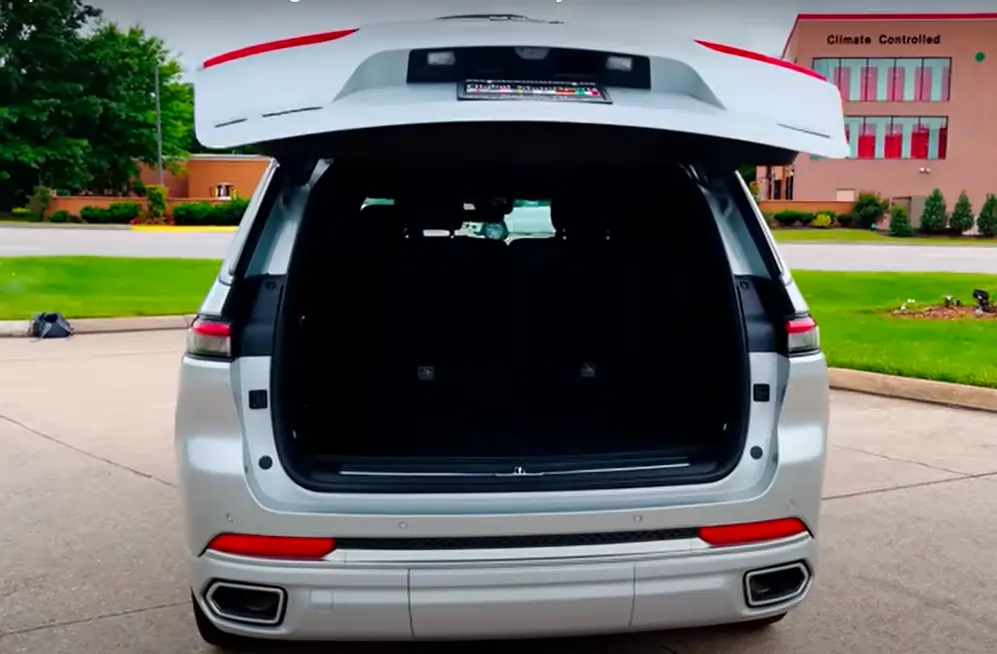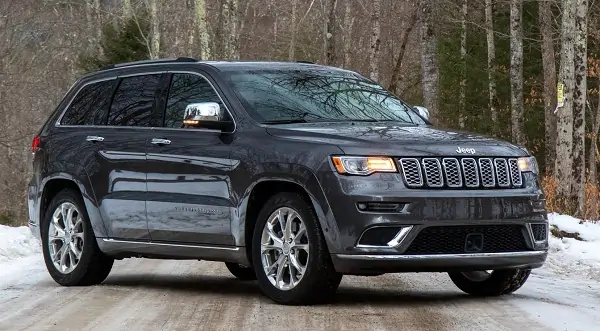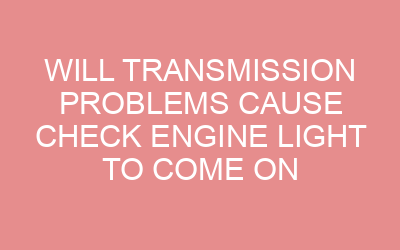The Jeep Wrangler is an iconic off-road SUV that has been around for decades. Its rugged body-on-frame construction and solid axles front and rear make it a highly capable 4×4. But how many axles does a Jeep Wrangler actually have?
In this in-depth guide, we’ll cover everything you need to know about Jeep Wrangler axles. From identifying the axle configuration to understanding the different axle variations between Wrangler models and lift kits, we’ll answer every question on Wrangler axles.
How Many Axles Does a Stock Jeep Wrangler Have?
The standard Jeep Wrangler comes equipped with two axles from the factory – a front axle and rear axle. This is known as a two-axle or 4×4 drivetrain configuration.
All Wrangler models including the Sport, Sahara, Rubicon, and Unlimited have two OEM stock axles. The front axle is a Dana 30 solid axle while the rear axle is a Dana 44 solid axle.
So the short answer is that a stock Jeep Wrangler has two axles, a Dana 30 front and a Dana 44 rear. This rugged solid axle design provides excellent articulation and wheel travel for climbing and crawling over obstacles off-road.
Do All Jeep Wrangler Models Have the Same Axles?
While all Jeep Wranglers have two axles, there are some differences between models:
– The Sport and Sahara models come equipped with a Dana 30 front axle and Dana 44 rear axle.
– The Rubicon model comes equipped with heavier duty Dana 44 axles front and rear.
– The longer 4-door Wrangler Unlimited models also have heavier duty Dana 44 rear axles.
So the Rubicon and Unlimited models feature upgraded axles over the base Sport models. But they all maintain the standard two-axle 4×4 configuration.
The axle specifications vary to provide increased durability for the off-road focused Rubicon and heavier Unlimited models. But two solid axles remain the defining drivetrain layout for maximum off-road capability across all Wrangler trims.
Do Lift Kits Change the Number of Axles?
Installing a suspension lift kit on a Jeep Wrangler does not change the number of axles. Lift kits are designed to work with the factory two-axle setup.
There are 3” to 4” lift kits for mild lifts and over 4” lift kits for maximum suspension travel. But even the biggest lift kits retain the Wrangler’s original two solid axle 4×4 configuration.
Some lift kits do include upgraded stronger axle components like reinforced tubes, trusses, and upgraded differentials. So you may get beefed up axle parts, but the Wrangler will still have just two axles front and rear after a lift kit upgrade. The lift kit only changes the ride height, not the fundamental axle layout.
Can You Add More Axles to a Jeep Wrangler?
While not common, it is possible to add additional axles to a Jeep Wrangler to make it a 6×6 or even 8×8 vehicle. This involves extensive custom fabrication work.
To convert a Wrangler into a 6×6, two additional axles need to be installed in between the front and rear OEM axles. This requires stretching the frame and adding complex suspension components.
Extreme fabricators have even created 8×8 Jeep Wranglers with four axles. But this is an expensive, extensive project.
For most purposes, the standard two-axle configuration offers more than enough off-road capability. But for someone looking for the ultimate custom rig, going beyond two axles is an option.
Should You Modify the Axles When Lifting a Wrangler?
When installing a suspension lift kit, consider whether axle modifications may be recommended:
– With a small 1.5″-3″ lift, the OEM axles are usually fine without modification. Just adjust alignment specs.
– For 3.5-4” lifts, upgrades like an adjustable track bar, extended brake lines, and recalibrated differentials may be required.
– For lifts over 4”, further upgrades like axle trusses, heavy duty tubes, and adjustable control arms may be necessary.
Work closely with the lift kit manufacturer to determine if any axle modifications are needed when increasing ride height. Going too big without axle upgrades can cause driveline vibration and steering issues.
Properly lifting a Wrangler entails balancing both suspension and axle components to avoid problems down the road. But the number of axles remains two front and rear.
What is a Jeep Wrangler’s Axle Ratio?
The axle ratio refers to the ratio between the revolutions of the driveshaft to the revolutions of the axle shafts and wheels. It affects torque output and RPMs.
Wranglers come with a standard 3.21:1 axle ratio from the factory. Higher numerical ratios like 4.10:1 are available for increased torque when off-roading or towing. Lower ratios improve highway efficiency but reduce low-end power.
Gearing can be further customized with aftermarket differential covers offering additional ratios. Consider your off-road and on-road needs to pick the optimal axle ratio. Just ensure the front and rear ratios match to prevent driveline binding.
Do Both Axles Deliver Power to the Wheels?
On a part-time 4WD Wrangler, only the rear axle delivers power to the wheels full-time. The front axle disconnects until 4WD is engaged.
In 2WD mode, the front axle spins freely without transferring torque. When shifted to 4WD, the front axle couples with the drivetrain and begins sending power to the front wheels.
This system allows the Wrangler to operate in RWD for efficiency, then shift to 4WD for increased traction in low-grip conditions. Both axles provide power in 4WD, the rear axle alone in 2WD.
Front Axle
The front axle on a Jeep Wrangler is a Dana 30 solid axle. On higher Rubicon and Unlimited models, the front axle is upgraded to a Dana 44.
This drivetrain layout with a solid front axle provides superior articulation and wheel travel over an independent front suspension. The front axle can flex and compress considerably for climbing obstacles.
Standard Dana 30 axles are sufficient for mild off-roading. But Dana 44s offer increased strength for hardcore rock crawling. Aftermarket axles like Dynatrac ProRock models are also available when upgrading the front axle.
Rear Axle
The rear axle on most Wranglers is a heavy duty Dana 44. This robust solid axle can handle significant abuse.
All four-door Wrangler Unlimited models come equipped with Dana 44 rear axles. The Rubicon packages also upgrade to Dana 44s rear and front.
Chrysler has used Dana 44 rear axles on Wranglers for decades given their legendary durability. Many enthusiasts never feel the need to upgrade from this stout OEM axle.
Axle Lockers
Locking differentials are available on some Wranglers to provide enhanced traction. Factory e-lockers on the Rubicon engage both rear wheels for improved 4WD performance.
Aftermarket automatic and selectable lockers can be installed on any axle. An ARB locker for the front axle is a popular upgrade to maximize off-road capability.
Axle lockers essentially link both wheels on an axle together to prevent spinning. This keeps torque flowing even if one wheel lifts off the ground. They take Wrangler axles to the next level.
Frequently Ask Question Of how many axles does a jeep wrangler have
How do I know which axles are on my Jeep Wrangler?
You can determine your Wrangler’s front and rear axle models by:
– Checking for manufacturer codes stamped on the axle tubes
– Looking up the axle specs for your specific model year and trim
– Inspecting dimensions like tube diameter that vary across Dana 30, 35, 44, etc.
– Consulting an expert Jeep mechanic to positively identify
Can I swap in stronger axles on my Jeep Wrangler?
Yes, many owners choose to upgrade their axles for greater strength. Some common swaps include:
– Upgrading from Dana 30 to Dana 44 front axle
– Swapping in beefed up Dynatrac ProRock axles
– Installing wider axle tubes and housings
– Retaining OEM axles but adding trusses for reinforcement
Work with an experienced shop to upgrade axles to match your vehicle build and off-roading needs.
Why does my Jeep Wrangler have one solid front axle instead of independent suspension?
Jeeps have solid front axles because:
– Provides better articulation and wheel travel over obstacles
– Eliminates complication of half shafts and CV joints
– Less unsprung weight improves crawling capability
– Proven rugged, reliable design for off-road abuse
The solid axle is a key reason Wranglers are so capable off-road. An independent suspension would compromise performance.
How do I maintain my Jeep Wrangler’s axles and differentials?
– Check axle fluid regularly and change at suggested intervals
– Inspect boots and seals for damage or leaks
– Look for loose differential covers
– Listen for excessive noise indicating worn bearings
– Clean and repaint axles to prevent rusting
– Consider adding aftermarket armor for underbody protection
What is caster angle and how does it relate to Wrangler axles?
Caster angle is the vertical tilt of the steering axis in relation to the front axle. More positive caster increases stability but reduces steering.
Lift kits can alter the factory caster angle spec. A good alignment shop can adjust caster via cam bolts or shims to optimize steering feel and handling after lifting.
Conclusion
Whether conquering the trails or just cruising around town, understanding the axles under your Jeep Wrangler provides insight into how this iconic 4×4 performs.
From OEM equipment Dana axles to beefed up aftermarket offerings, the possibilities are endless for enhancing your Wrangler’s capabilities.
But the standard two-axle layout with a solid front and rear axle remains the ideal configuration for the Wrangler’s intended purpose. This robust, flexing suspension allows true off-road mastery straight from the factory.
Modifying axle ratios, adding lockers, and upgrading to heavier axle components can make an already great off-roader even better. Just know that a Wrangler’s essence originates from its time-tested two solid axle design.
So whether you’re hitting the trails or just commuting to work, remember that two solid, rugged axles enable your Jeep Wrangler to go anywhere and do anything. No other 4×4 combines daily drivability with off-road supremacy quite like the Wrangler thanks to its signature axle setup.














Leave a Reply